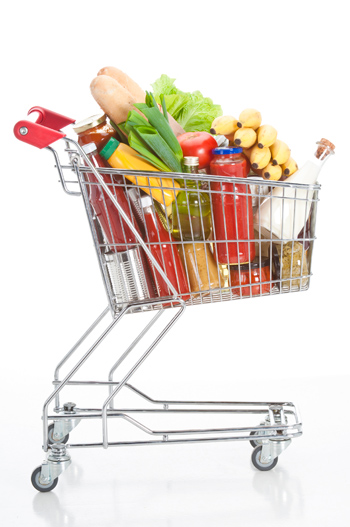For Consumers
FDA Goal: Quickly Tracing Tainted Foods
 |
 Get Consumer Updates by E-mail
Get Consumer Updates by E-mail
 Share copies of this article (999 KB)
Share copies of this article (999 KB)
In the past five years, consumers have faced widespread outbreaks of foodborne illnesses tied to foods—such as spinach, peanut butter and eggs—that are staples of the American diet.
The Food and Drug Administration is taking steps to prevent or shorten these outbreaks by developing the tools needed to rapidly track down foods that may be contaminated.
Two pilot projects—one for processed foods and the other for produce—will be conducted to explore how FDA and the food industry can quickly trace foods back to the common source of contamination that led to an outbreak of foodborne illnesses. These pilots must include at least three different types of foods that were the subject of significant outbreaks in the five years preceding the January 2011 enactment of the Food Safety Modernization Act (FSMA).
The Institute of Food Technologists (IFT) will carry out the pilots, at FDA’s direction, under an existing contract with the agency. IFT is a Chicago-based nonprofit scientific society focused on food science and technology and has previously worked with FDA on product-tracing studies.
These pilots are mandated by the landmark food safety law that requires FDA to implement a system that is based on science and addresses food safety hazards from farm to table.
“We can prevent illnesses and reduce the economic impact to the food industry if we can more quickly discover what food may be causing an outbreak and what foods can be eliminated from consideration,” says Michael R. Taylor, FDA’s deputy commissioner for foods.
What happens next
A product tracing system involves documenting the production and distribution chain so that a product can be traced back to a common source or forward through distribution channels if there’s evidence of contaminated food. The actions that follow may include removing the product from the marketplace and alerting the public if it has already been distributed.
“What we’re looking for is a system that is practical, feasible, and rapid,” says Sherri McGarry, senior advisor in FDA’s Office of Foods. “Our No. 1 priority is protecting public health.”
McGarry explained that IFT will work with the key groups that have a stake in this endeavor—food industry, state and federal government agencies, and consumers—in developing the pilot programs. The goal is to include industries that represent the food supply chain, including farms, restaurants, and grocery stores.
“We recognize the importance of engaging stakeholders throughout the process and will consider what is practical for facilities of varying sizes and capabilities,” says Taylor.
The pilot programs will evaluate the types of data that are most needed for tracing, ways to connect the points in the food supply chain, and how quickly data can be made available to FDA. A key goal in the pilot projects will be to explore methods to track food and identify a common source or supplier starting at multiple points of sale.
“We’re looking for a system that will allow FDA to quickly connect the dots along the food supply chain,” says McGarry.
"What we’re looking for is a system that is practical, feasible, and rapid."
After the pilots
After the pilot programs are completed and the additional data gathered, FDA will further facilitate tracing by establishing record-keeping requirements for foods that may pose a high public-health risk.
As part of that process—as mandated by FSMA—the agency will define what foods are high risk based on factors such as their safety history and the likely severity of an illness attributed to that food. The record-keeping requirements ultimately established under this law will apply only to these high-risk foods.
“The goal is to rapidly track these products, remove them from the food supply, and keep consumers from getting sick,” says McGarry.








